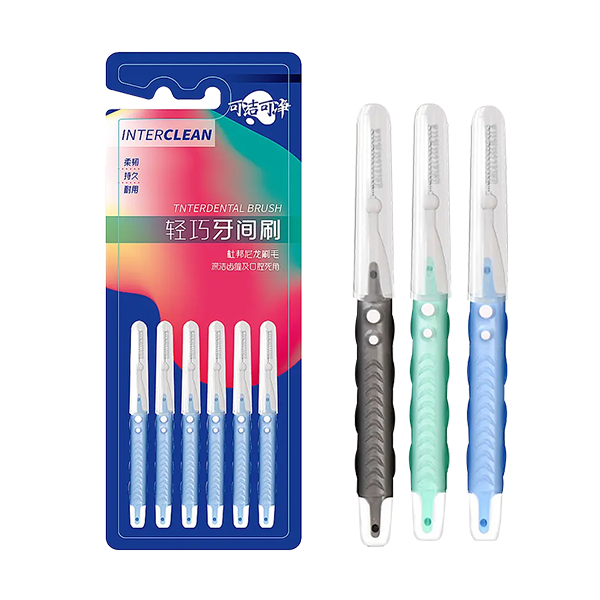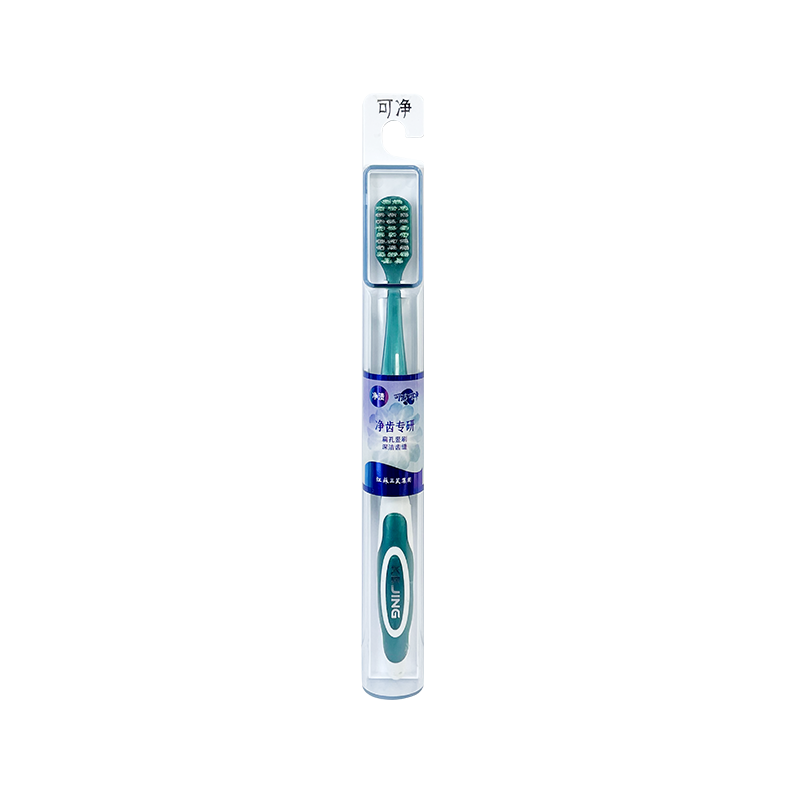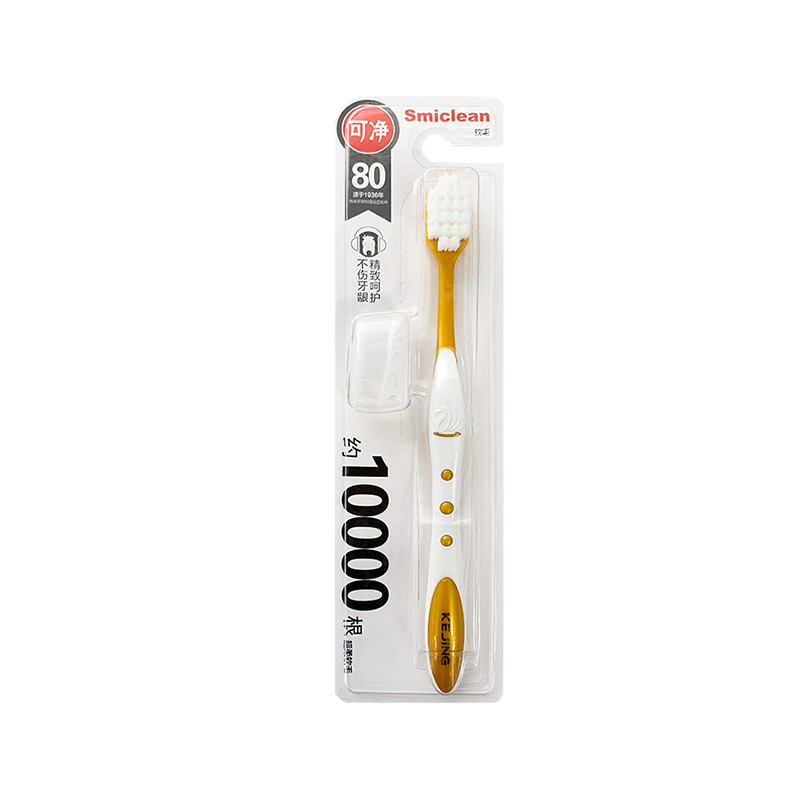Are Interdental Brushes the Secret to Perfect Oral Hygiene?
When it comes to maintaining a healthy smile, most people think brushing twice a day is enough. However, dental professionals agree that even the most thorough toothbrushing cannot completely clean the tight spaces between teeth. That’s where interdental brushes come in. But what exactly are interdental brushes, and why are they becoming a must-have tool for modern oral care?
What Are Interdental Brushes?
An interdental brush is a small, specialized cleaning tool designed to remove food particles and plaque from the spaces between teeth — areas that a regular toothbrush often misses. It consists of a tiny bristled head attached to a thin wire and handle. The brush is inserted gently between the teeth to clean interdental spaces effectively and prevent the buildup of plaque and bacteria.
Available in various sizes and shapes, interdental brushes are suitable for people with natural teeth, dental implants, braces, bridges, or gum problems. They are particularly beneficial for those who have wider gaps between their teeth or suffer from gum recession.
Why Isn’t Regular Brushing Enough?
A traditional toothbrush cleans only the outer, inner, and chewing surfaces of teeth. However, approximately 40% of the tooth surface lies between the teeth, where toothbrush bristles cannot reach effectively. When plaque accumulates in these hidden spaces, it can lead to:
- Gingivitis (gum inflammation)
- Periodontitis (advanced gum disease)
- Cavities (especially between teeth)
- Bad breath (halitosis)
Flossing has long been recommended for cleaning these areas, but studies show that many people find flossing difficult, time-consuming, or uncomfortable. Interdental brushes offer a simpler, more effective, and often more comfortable alternative.
How Do Interdental Brushes Work?
Interdental brushes clean by mechanical removal of plaque and debris. The small bristles are designed to fit snugly into the spaces between teeth and sweep away bacteria and food particles with gentle back-and-forth motions.
Unlike floss, which slides along tooth surfaces, interdental brushes physically scrub the sides of the teeth and gumline, providing superior plaque removal — especially for people with gaps wider than typical floss can clean.

What Are the Benefits of Using Interdental Brushes?
-
Superior Plaque Removal
Research shows that interdental brushes remove more plaque than flossing, especially in larger gaps and around orthodontic appliances. -
Prevention of Gum Disease
Regular use helps prevent gingivitis and periodontitis by reducing bacteria accumulation between teeth. -
Improved Breath
By removing trapped food particles and bacteria, interdental brushes help combat bad breath. -
Gentle on Gums
When used correctly, interdental brushes are gentle and less likely to cause gum bleeding than improper flossing. -
Easy to Use
The ergonomic handle and simple brushing motion make them user-friendly, even for those with limited dexterity. -
Ideal for Dental Work and Braces
People with orthodontic braces, bridges, or implants benefit greatly from interdental brushes, as they reach areas inaccessible to standard brushes. -
Encourages Daily Cleaning Habits
Their ease of use encourages regular interdental cleaning — a key factor in long-term oral health.
What Are the Different Types and Sizes of Interdental Brushes?
Interdental brushes come in various sizes, shapes, and materials to accommodate different dental needs.
-
Sizes:
- Small sizes (0.4–0.6 mm): Suitable for tight gaps between front teeth.
- Medium sizes (0.7–1.0 mm): For moderate gaps or people with slight gum recession.
- Large sizes (1.1–1.5 mm or more): For wider gaps, implants, or bridgework.
-
Shapes:
- Straight: Standard design for easy front-to-back access.
- Angled: Designed for cleaning the back teeth more effectively.
-
Materials:
- Plastic-coated wire: Prevents scratching of enamel and dental implants.
- Rubber or silicone bristles: Gentle alternative for sensitive gums.
- Metal-free designs: Ideal for users with metal allergies or implants.
-
Handles:
- Some interdental brushes have long handles for better reach, while others have compact, travel-friendly designs.
Choosing the right size and type is essential — if the brush is too small, it won’t clean effectively; if too large, it could damage gums. Dentists often recommend testing different sizes or consulting a dental professional for personalized advice.
How to Use an Interdental Brush Correctly
Proper technique ensures effective cleaning and protects the gums from injury. Here’s a step-by-step guide:
-
Choose the Correct Size
Use a brush that fits snugly but comfortably between your teeth. -
Insert Gently
Do not force the brush into tight spaces. Wiggle it slightly to find the correct angle. -
Move Back and Forth
Push and pull the brush gently a few times in each interdental space to remove plaque and debris. -
Rinse the Brush
After each use, rinse the brush under running water to remove trapped particles. -
Replace Regularly
Interdental brushes wear out with use. Replace them every week or when bristles appear worn. -
Use Daily
For best results, clean between your teeth once a day, preferably before brushing at night.
Dentists often recommend combining interdental brushing with regular toothbrushing and mouthwash for optimal oral hygiene.
Who Should Use Interdental Brushes?
Interdental brushes are suitable for almost everyone, but they are especially beneficial for:
- Adults with gum recession (where gaps between teeth widen)
- People with braces, bridges, or implants
- Individuals prone to gum disease or cavities
- Older adults with spacing caused by bone loss
- Anyone seeking fresher breath and cleaner teeth
Even children and teenagers with braces can use smaller, gentle brushes under supervision.
How Do Interdental Brushes Compare with Dental Floss?
| Feature | Interdental Brush | Dental Floss |
| Ease of Use | Simple and fast | Requires skill and coordination |
| Effectiveness | Cleans larger gaps more thoroughly | Better for tight contacts |
| Comfort | Gentle, less gum trauma | May cause bleeding if used incorrectly |
| Suitability | Great for braces, implants, and gum recession | Best for closely spaced teeth |
| User Compliance | Higher, due to simplicity | Often neglected or skipped |
Many dentists now recommend combining both tools — floss for tight gaps and interdental brushes for larger spaces — to achieve complete interdental cleaning.
What Do Dental Experts Say?
Clinical studies consistently show that interdental brushes are more effective than floss in preventing gum inflammation. According to research published in the Journal of Clinical Periodontology, using an interdental brush daily significantly reduces bleeding and plaque levels compared to flossing alone.
Furthermore, the European Federation of Periodontology recommends interdental brushes as the first choice for interdental cleaning for adults with sufficient space between teeth. This endorsement reflects a growing consensus among dental experts that interdental brushes should be part of everyone’s oral hygiene routine.
How Often Should You Replace an Interdental Brush?
Because interdental brushes are small and used in confined spaces, they wear out quickly. As a rule of thumb:
- Replace the brush every 3–7 days, depending on use.
- If bristles become bent, frayed, or deformed, it’s time for a new one.
- Regular replacement ensures hygienic and efficient cleaning.
Can Interdental Brushes Prevent Dental Problems Long-Term?
Yes. Consistent use of interdental brushes has long-term benefits, including:
- Reduced Gum Inflammation: Prevents gingivitis before it progresses to periodontitis.
- Lower Cavity Risk: Removes plaque that leads to interproximal decay.
- Better Overall Health: Studies link gum disease to heart disease, diabetes, and respiratory conditions — keeping gums healthy supports overall well-being.
- Whiter Smile: Removing plaque between teeth helps prevent discoloration and tartar buildup.
Simply put, interdental brushes are a small tool with a big impact on long-term oral and systemic health.
Are There Any Drawbacks to Interdental Brushes?
Although interdental brushes are safe and effective, some users may experience minor issues:
- Initial Gum Bleeding: Common when first used, but usually stops within a week as gums become healthier.
- Finding the Right Size: It may take trial and error to determine the best fit.
- Cost: Slightly more expensive than floss, but still affordable and reusable.
With correct use and regular replacement, these minor inconveniences are easily manageable.
Conclusion: Are Interdental Brushes the Future of Oral Care?
Absolutely. In the pursuit of perfect oral hygiene, interdental brushes have become a game-changer. They combine simplicity, efficiency, and comfort to clean areas where toothbrushes and floss cannot reach. By integrating interdental cleaning into your daily routine, you can significantly reduce your risk of cavities, gum disease, and bad breath — and maintain a brighter, healthier smile for life.
So, the next time you think your brushing routine is complete, ask yourself: Have you cleaned between your teeth today? If not, an interdental brush might just be the missing piece in your dental care routine.
 English
English русский
русский Español
Español




